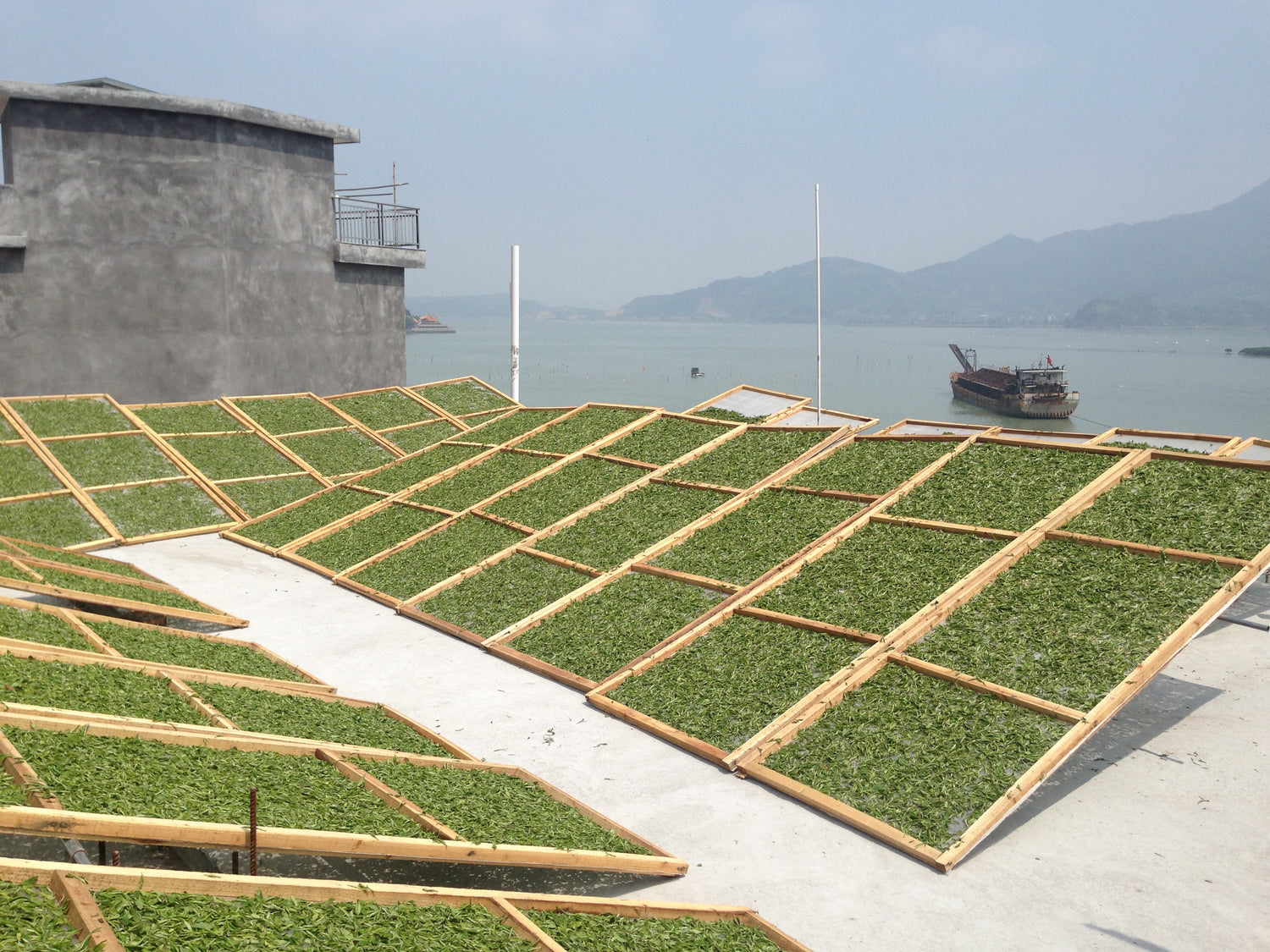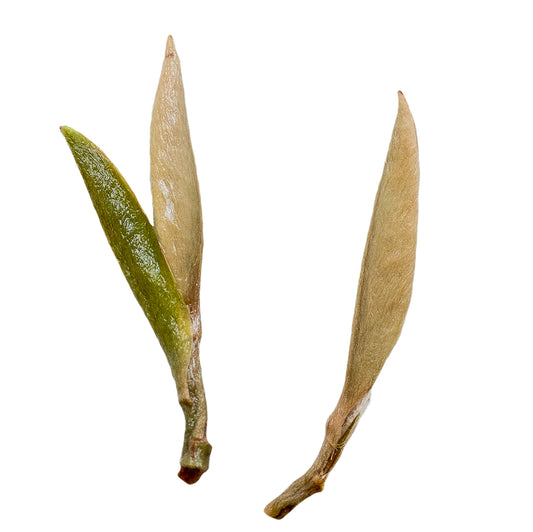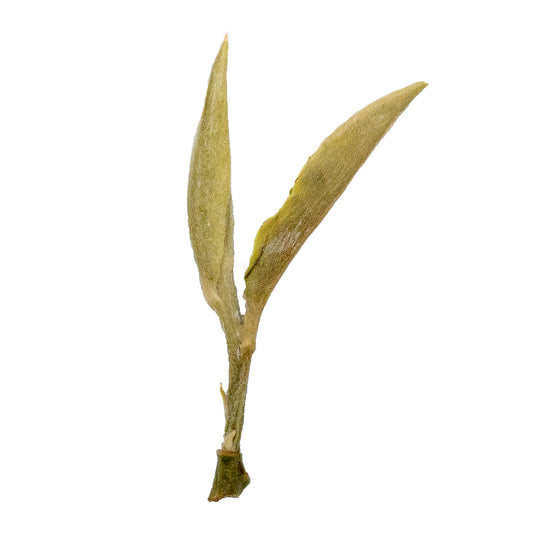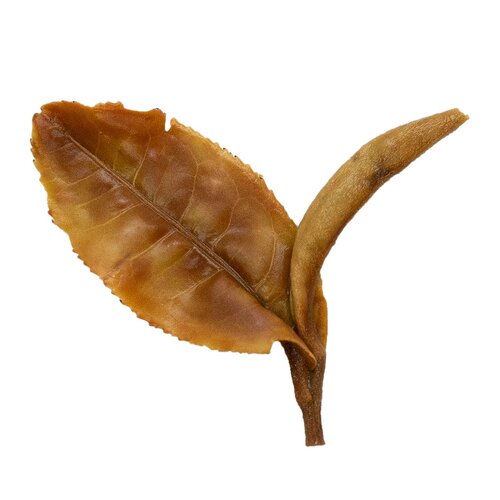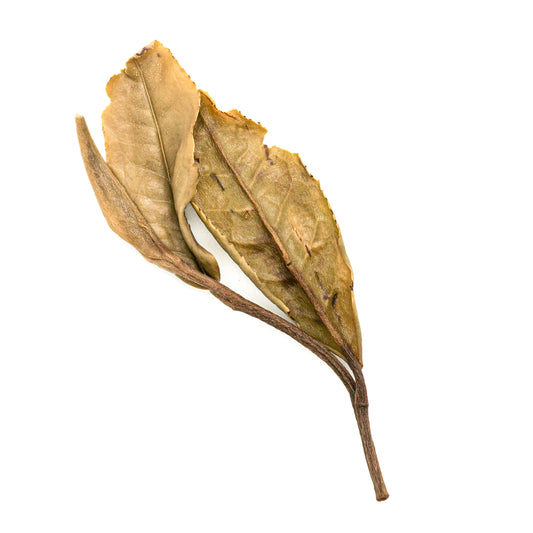White Tea Origin
As we know it today, white tea uses a unique processing technique that has only about 220 years of undisputed history. Even the mythical origin of white tea doesn't correspond with its actual origin, adding more confusion to tourists who pay pilgrimage to the wrong location based on folklore!
The origin story of white tea starts in Tai Mu Shan (commonly mispronounced as Tai Lao Shan). The story tells of a kind-hearted girl making tea from a magical tea tree given by the divine to cure villagers of deadly measles. Many attractions of Tai Mu Mountain, including a rumored original divine tree, surround this legend (it is a pretty old tea tree for the varietal, estimated around 170 years old, which does not line up with the timeline in the story, oh well.)
In 1857, records pointed to a merchant who migrated some tea trees from Tai Mu Mountain to Dian Tou, Fu Ding, and started the current day white teas. However, Fu Ding's record shows that in 1796, locals were already making white tea with indigenous varietals. Regardless of this disaccord, Dian Tou of Fu Ding now remains the most renowned white tea origin. In contrast, minimal tea activities can be found two hours away in Tai Mu Shan aside from tourist attractions and advertisements of tea brands.
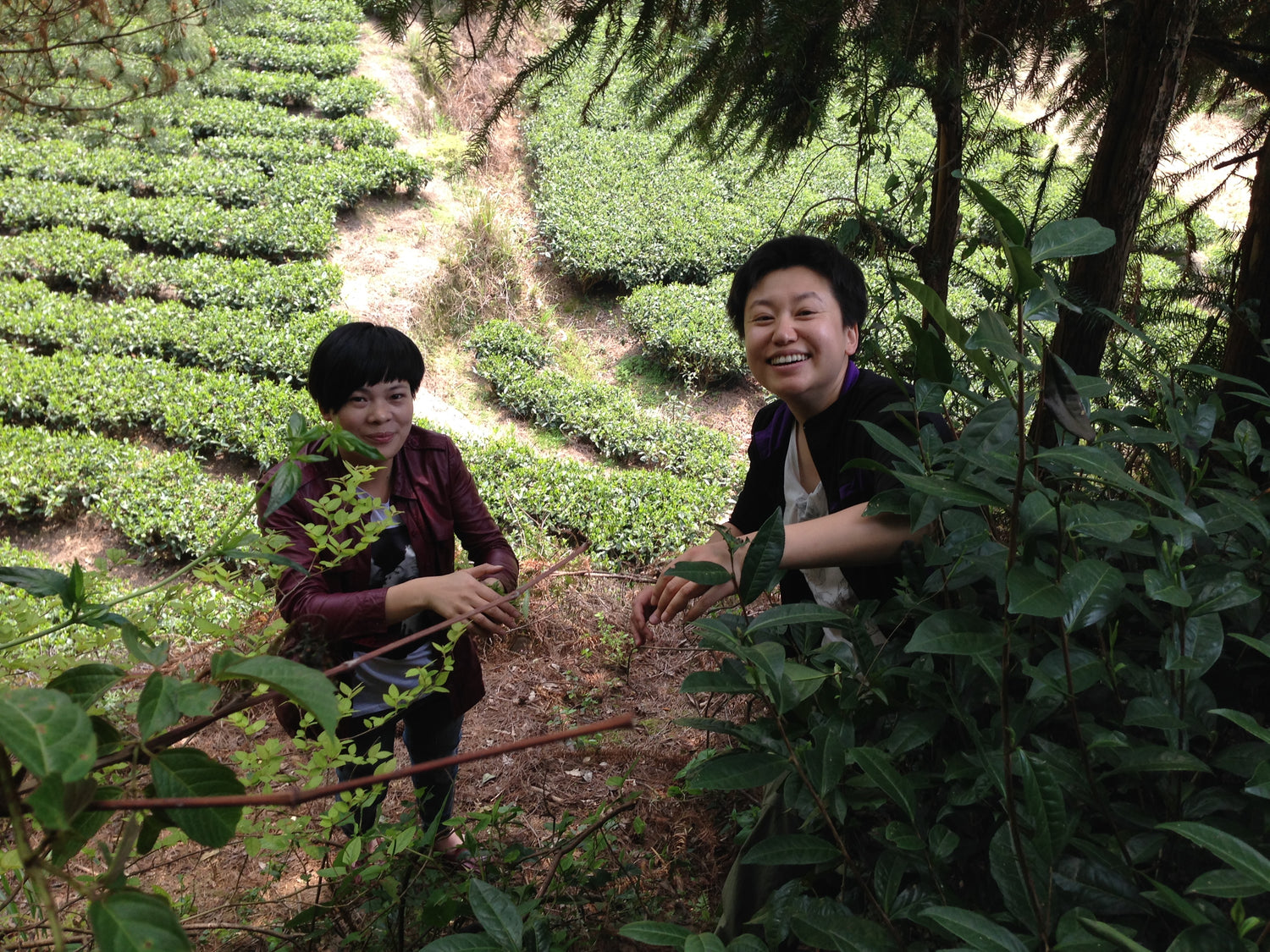
White Tea Processing
Traditionally, freshly picked leaves and buds are wilted under shade to lose moisture; then, they are exposed to the sun for fermentation and drying. The loose-leaf teas are then finished by baking to dry with charcoal ash on bamboo trays, though if the sun is strong enough, the tea is dried by the sun. Making white tea is a lot like sailing; one has to work with the wind and the sun to ensure the fermentation of the leaves with these natural tools at a regulated rate.
The tea makers are mindful about adjusting the leaves to catch the sun at the right angle while allowing wind to blow under the leaves to cool them down.
When the sun is too intense, and the moisture content is still high, the leaves will turn red, giving the tea a sweetness resembling over-ripened fruit (not a good taste in tea). If either the sun is not strong enough or too cloudy, the tea will take much longer to metabolize with low enzyme activities. These factors will allow stale water trapped inside to result in a "stinky green" quality, like a rotten or overcooked vegetable.
Because white teas are never exposed to enzyme-destroying high heat or fermented thoroughly where the enzymes are exhausted, they can be aged. Theoretically, white tea has better aging potential than raw Pu Er, though aging tea is a new practice and not a tradition. Making white tea the traditional way takes much time, skill, and space, making it unsuitable for mass production. Before the white tea hype (even just in 2013), sun-made white teas were still the primary method in Fu Ding, with facility-wilted teas commonly avoided.
A slogan appeared in 2013, "one-year tea, three-year medicine, seven-year treasure." This concept bolstered the aging benefit of white tea, increased export demand. New white teas such as Moonlight White from Yun Nan arose much all white tea adopted a new manufacturing method. The once-small township of Dian Tou turned into a bustling "city" in just one year. Since the traditionally made white teas have become rarer, over-cultivated, dominated by clone varietals, and infested with manufactured teas made white tea notorious among tea connoisseurs. There is also a fear that the pitfall of Tie Guan Yin will reoccur in the white tea regions.
Fu Ding vs Zheng He Terroir
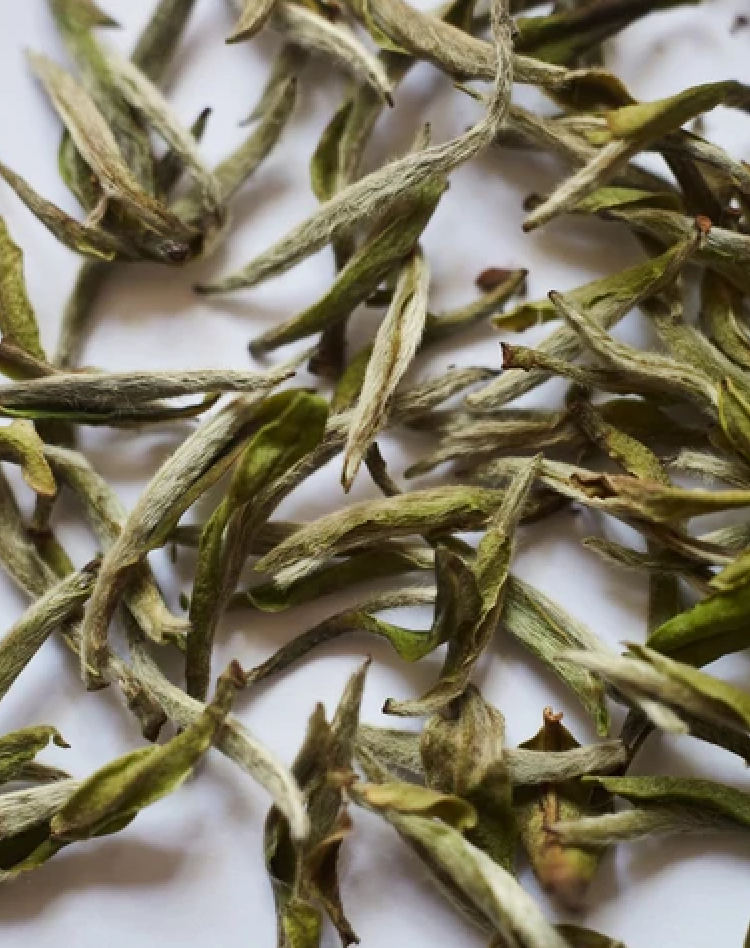
Picking Grade and Naming Conventions
White teas are a rare case where the teas are named after the picking grade instead of the more familiar way of by varietal, location, or when the tea is famous, by both. It is crucial to point out that though picking grade is essential, there are many more contributing factors to the quality of the tea. Thus the names should not be used as a parameter for buying decisions. After all, the number one factor influencing the price is the location, so much so that a Yin Zhen from Fu An sells less than a Shou Mei in Fu Ding. However, given that everything else is the same, the higher picking grade is almost always preferred over the lower.
Tea Drunk's White Teas
Famous Chinese White Teas
-
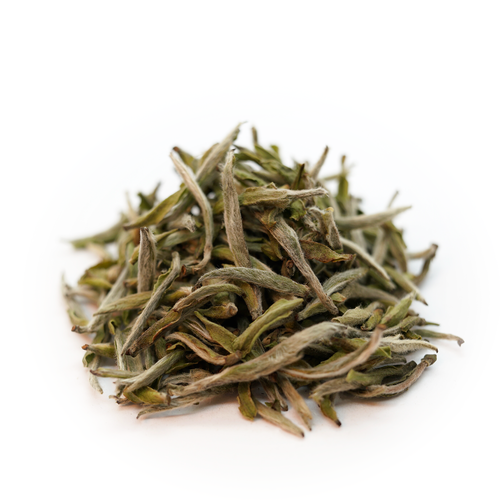
Bai Hao Yin Zhen (Silver Needle)
Bai Hao Yin Zhen is the highest white tea picking grade. There are two ways to meet the Yin Zhen grade, by picking just the buds from the tea trees or picking the teas with one or two leaves first and then going through a sorting process to pick out just the buds. The latter method is considered more authentic and sophisticated because the first method is subject to human error, hurting the tea trees. Picking style is essential in ensuring the health and ongoing quality of tea trees. It is sometimes used as an extrapolation method to determine how valuable the tea is based on the care of the trees.
-
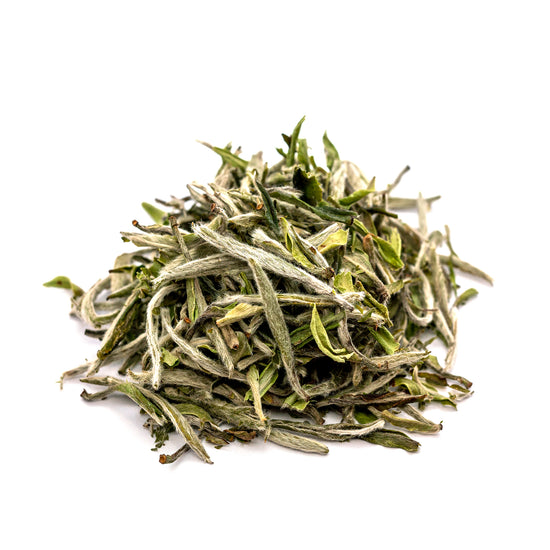
Bai Mu Dan (White Peony)
The official second grade of white tea, Bai Mu Dan, consists of one fat bud and two leaves. It is not always inferior in terms of picking time to Yin Zhen. The best Bai Mu Dan is picked at the same time as Yin Zhen, and it is simply the maker's choice whether or not to go through more steps to make it into Yin Zhen or to sell as Bai Mu Dan. In this case, a Bai Mu Dan can be considered an un-de-leaved Yin Zhen, and it is commonly accepted as a preference in taste among professionals to choose Bai Mu Dan over Yin Zhen instead of a fail of expertise. However, even though Bai Mu Dan has overlapping seasons with Bai Hao Yin Zhen, Bai Mu Dan's making continues even when Yin Zhen's making has ended. Thus, the later harvested Bai Mu Dan is indeed more inferior to Yin Zhen. As the season goes into summer, the buds become skinnier, and the leaves become more prominent than the buds.
-
Gong Mei
In recent years, Gong Mei, the third grade of white tea, has often been skipped over to up-sell the tea as Bai Mu Dan grade. Gong Mei is more often made in the fall to take advantage of the cooler temperature and relatively sizable bud. However, it is characterized by skinnier buds compared to Bai Mu Dan's, and the leaves are always longer than the buds.
-
Shou Mei
The lowest grade of white tea with mostly leaves and very skinny or no buds, Shou Mei is often made at the very end of spring and early summer, where the weather is becoming rapidly warmer and more humid. One signature characteristic of Shou Mei is its darker color due to the higher moisture content carried by the wind that blows from north to south. As white tea grade goes down, the flavor changes from bright to mellow. A side-by-side comparison of Yin Zhen and Shou Mei is a classic exercise for tea students to distinguish preference from quality. Yin Zhen is lighter but fuller, while Shou Mei is heavier but emptier.

